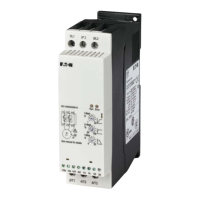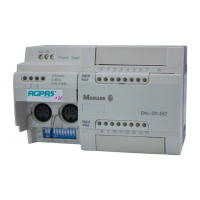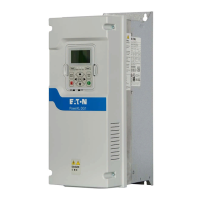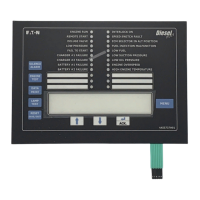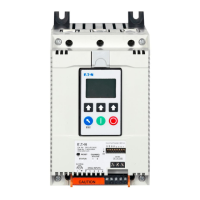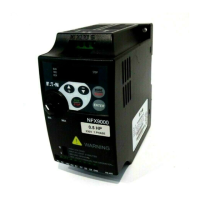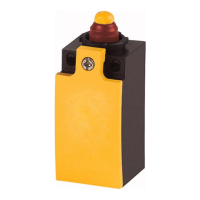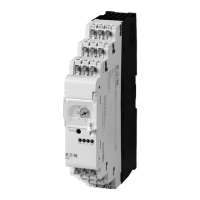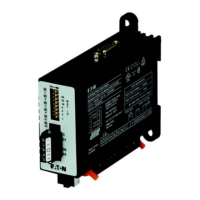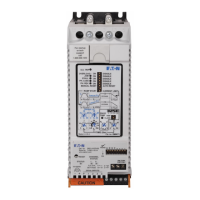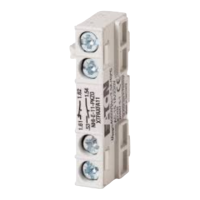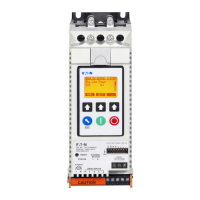4 Operation
4.5 Commissioning instructions
104 DS7 Soft starter 09/16 MN03901001Z-EN www.eaton.com
4.5 Commissioning instructions
.
No. Occupation
1 Set the potentiometer or the U-Start parameter as per the recommendation in the table above or,
as a general setting, turn t-Start to approximately 50% (15 s) and t-Stop to its minimum value
(0 = coasting).
2 Starting
After a maximum time of one second, the motor should start to turn, otherwise deactivate the
start signal (or on devices from 41 A the Enable signal) immediately.
If the motor has turned, proceed with point 3.
If the motor has not started, increase U-Start by around 10 % (to around 40 %).
Wait a minute for cooling and repeat step 1.
3 Optimizing t-Start: The motor should accelerate evenly from standstill to rated speed at
rated load. When it has reached rated speed, the set ramp time should have completed
(U
2
=U
LN
, = TOR).
4 Repeat the start process. After every start, wait around five minutes in order to allow the unit
to cool down.
5 Run-up optimization
• If the drive accelerates faster than the set ramp time (t-Start), shorten this as much as
this application allows.
• If the application requires more time for the acceleration than the set ramp time, increase
the value of t-Start – unless the load cycle of the soft starter is exceeded.
• If the acceleration time is longer than the limits set in step 4 or 5, let the soft starter cool
down for 5 minutes, increase the ramp time and proceed with step 4.
6 If a stop ramp is needed, the time set (t-Stop) should be longer than the machine’s coasting time
in order for the stop ramp to have an effect. As a soft stop produces a current increase, observe
the thermal output capacity (load cycle) of the soft starter (number of starts per hour). Within this
context, the stop ramp must be considered equivalent to a start in terms of thermal
characteristics.
→
If the required settings for an application exceed the permissible
load cycle of the soft starter, a larger device must be selected
accordingly.
→
The soft starter heats up at the start. In order to avoid
overheating, make sure to adhere to the required cool-down
times without fail. If there will be frequent starts during normal
operation, the soft starter may have to be oversized under
certain circumstances and/or optional fan DS7-FAN… may have
to be used.
For more information, refer to the “Technical data” appendix.
Additional information including application and sizing examples
is found in manual MN03902001Z-EN, “Sizing Soft Starters.”
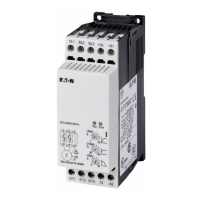
